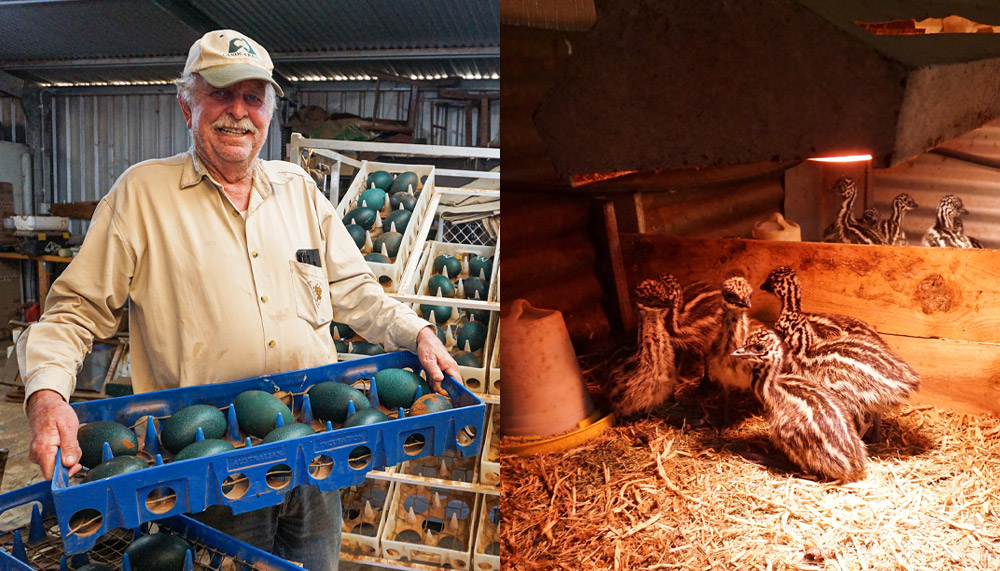The Piltz family has hung on through boom and bust to become one of the few producers still farming emus.
Story + Photos Sarah Harris
Well before the first cracks appear, the sound of pecking and chirping can be heard from within the super-sized teal green shell. Suddenly, a three-toed foot bursts forth with a mighty effort that sets the 640g egg rocking. It could be a scene from Jurassic Park, although the background music from the local South Australian Riverland radio station playing in the emu hatchery is far less dramatic.
“We play music to calm them – they don’t seem to care what genre,” emu farmer Daryn Piltz laughs, as the whistles and cheeps of new hatchlings compete with the strains of Dolly Parton and the whirr of the incubator fan. Despite all the horrors of 2020, it has proven a particularly fertile year at SA’s only licensed emu farm, with the incubator full of more than 1000 eggs at the end of July and the birds still laying into August.
Rain is key. “If you all of a sudden get a burst of eggs, you know there is good rain coming,” Daryn’s father Wayne says. It was Wayne who decided to move from the citrus, grapes and avocados more commonly associated with the Riverland into farming Australia’s emblematic bird shortly after it became legal in SA in the early 1990s.
Touted as the next big thing in primary production, emu farming had already taken off in other Australian states. This unconventional livestock was also being bred up in vast numbers overseas, based on wildly optimistic predictions of markets for meat, leather and feathers.
This story excerpt is from Issue #133
Outback Magazine: Oct/Nov 2020










